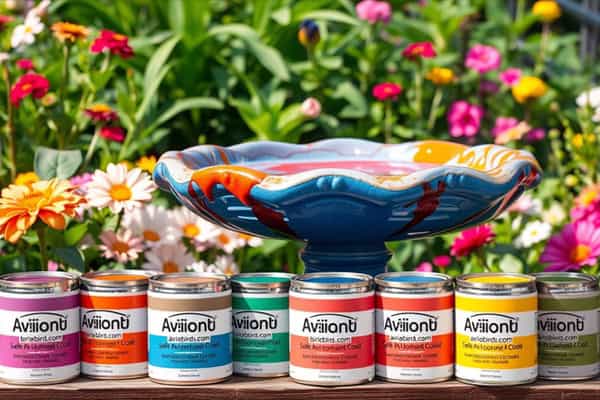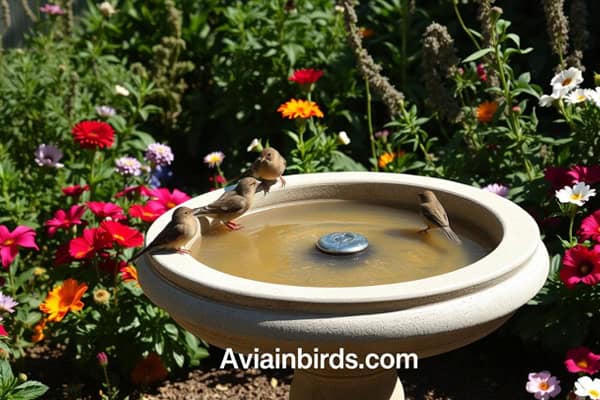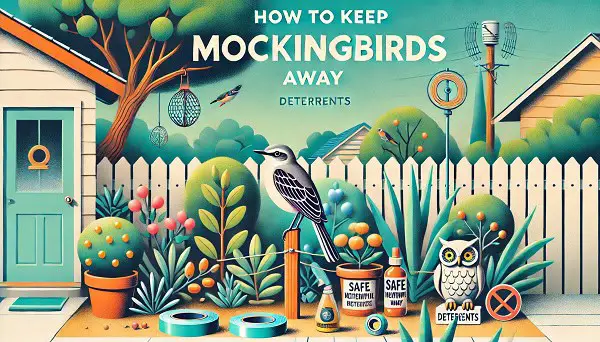What Are Safe Paints for Bird Baths? All You Need to Know
Have you considered how the paints on our bird baths affect the birds we want to attract? It’s important to pick safe paints for bird baths. Choosing non-toxic paints makes our gardens look great and keeps our bird friends healthy. Let’s learn why safe painting is key and how it helps our beloved birds.
Understanding the Importance of Safe Paints for Bird Baths
Bird baths are key spots for our feathered friends. They often visit these places, making it vital to pick safe paints. Using safe paints keeps birds away from toxic chemicals that could harm them.
Why We Should Care About Safe Painting
Looking after birds is more than just feeding and watering them. It means making sure their living spaces are safe. We must be careful with paint choices to avoid harming them. Birds might touch or eat painted surfaces, leading to health problems.
The Impact of Toxic Paints on Birds
Toxic paints can be very dangerous. They have chemicals that are bad for birds and can cause poisoning or even death. We need to know how these paints affect birds to make safer choices. This helps keep our bird friends safe.

What Are Safe Paints for Bird Baths?
Choosing the right paint for bird baths is crucial. We want our feathered friends to be safe and for the paint to look great. There are many non-toxic paint options, with water-based paints being the best for the planet. Let’s look into these options.
Types of Paints That Are Safe for Use
For painting bird baths, we should pick paints that are tough and safe. Water-based paints are top choices for the outdoors. They don’t release harmful chemicals and help keep birds safe.
Water-Based Acrylic and Latex Options
Water-based acrylic and latex paints are great for bird baths. They are easy to apply and clean up. Acrylic paint gives bright colors and stands up to the weather. Latex paint is safe for the planet and dries fast, keeping birds away less time.
| Paint Type | Advantages | Considerations |
|---|---|---|
| Acrylic | Vibrant colors, durable, easy to clean | May require a primer for non-porous surfaces |
| Latex | Low toxicity, flexible finish, quick drying | Less resistant to extreme temperatures |
| Water-Based | Environmentally friendly, minimal VOCs | May need multiple coats for deep colors |
Understanding the safe paint options helps us make smart choices. By picking water-based acrylics and latex, we make our bird baths safe for birds.
Best Practices for Painting Bird Baths
Painting bird baths requires the right techniques for a great finish. Following key paint preparation tips helps the paint last longer and looks good. Choosing the right surface prep and finishes is key to success.
Preparing the Surface Properly
Starting with a clean surface is crucial for painting bird baths. Here are the steps to follow:
- Clean the Surface: Use a gentle cleanser to remove dirt and old paint.
- Sanding: Sanding makes the surface smooth, helping paint stick better.
- Priming: A good primer improves paint adhesion and makes the paint last longer.
These steps help us achieve beautiful finishes on our bird baths.
Choosing Non-Toxic Sealants and Finishes
Choosing non-toxic sealants and finishes for bird baths is important. Here are some top picks:
| Sealant Type | Benefits |
|---|---|
| Water-Based Sealants | Eco-friendly, easy to apply, works on many surfaces. |
| Natural Oil Sealants | Keeps water out and is safe for birds. |
| Varnishes | Long-lasting finish that protects against weather and fading. |
Following these tips ensures our bird baths look great and stay safe for birds.
Recommended Paints for Different Bird Bath Materials
Choosing the right paint for our bird baths is key to their lasting well-being and safety for birds. Each material like concrete, metal, and stone needs its own special paint. We’ll look at the best and safest paints for each type of bird bath.
Safe Choices for Concrete Bird Baths
For concrete bird baths, we suggest using high-quality exterior latex paint made for rough surfaces. This paint is tough and keeps birds safe. Here’s how to apply it:
- Clean the surface well, getting rid of dirt or debris.
- Make sure the concrete is dry before painting.
- Apply paint with a brush or roller for an even coat.
- Wait for the paint to dry as the instructions say.
Recommended Options for Metal and Stone Baths
For metal bird baths, go for weather-resistant acrylic paints that stick well to metal. These paints fight off peeling and rust, keeping the bath safe for birds. For stone baths, use the same acrylic paint but make sure it’s for stone.
Here’s a quick guide to the best paints for different materials:
| Material | Recommended Paint Type | Key Benefits |
|---|---|---|
| Concrete | High-quality exterior latex paint | Durable, non-toxic, adheres well |
| Metal | Weather-resistant acrylic paint | Resistant to rust, long-lasting finish |
| Stone | Acrylic paint suited for stone | Safe for birds, excellent adhesion |
Common Mistakes to Avoid When Painting Bird Baths
Painting bird baths can be tricky, and we need to avoid some common mistakes. It’s important to know the dangers of oil-based paints and the role of inside paint. This knowledge helps us do a better job and keeps our bird friends safe.
Using Oil-Based Paints: Why It’s a Bad Idea
Choosing the wrong paint is a big mistake. Oil-based paints have harmful solvents that can hurt birds. These toxins can get into the water, putting our feathered friends at risk. We should pick safe, non-toxic water-based paints instead. This keeps the bath safe for the birds and for us.
Ignoring the Inside of the Bath
Many people forget to paint the inside of the bath. They only focus on how it looks outside. But, painting the inside with safe, non-toxic finishes is crucial. It stops harmful substances from getting into the water. Keeping the inside safe is just as important as keeping the outside safe for the birds’ health.
Conclusion
As we finish our talk on safe paints for bird baths, it’s clear that choosing non-toxic options is good for birds and our outdoor spaces. We learned about the dangers of toxic paints and how to paint safely. This way, we make our gardens healthier for birds and improve their beauty.
This summary on painting bird baths highlights the need for the right materials and proper surface prep. It’s also key to pick finishes that are safe for wildlife. By doing this, we help create a better backyard for everyone.
Let’s act on what we’ve learned in this article. Using safe painting practices for bird baths makes our yards a safe place for birds. This lets us enjoy their company and the happiness they add to our lives.
Our Recommended 🐦Articles To Read
- Red Birds In Michigan
- Blue Birds in Pa (Pennsylvania)
- Black and White Birds in Michigan
- Brown Birds In Michigan
- Yellow Birds in Colorado
- Black Birds in Michigan
Thanks for reading my article💕



